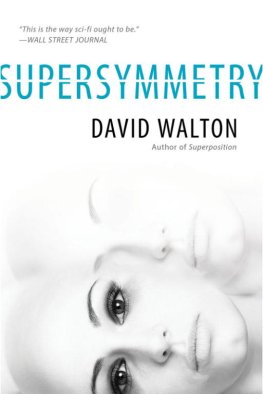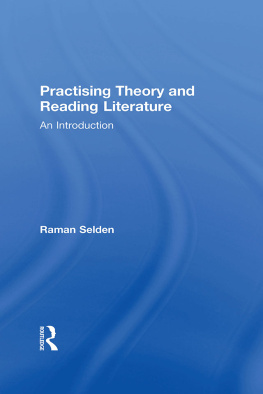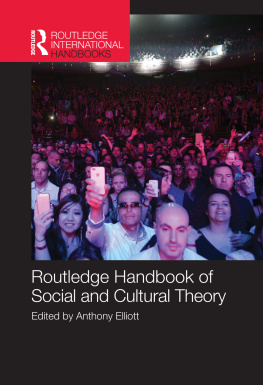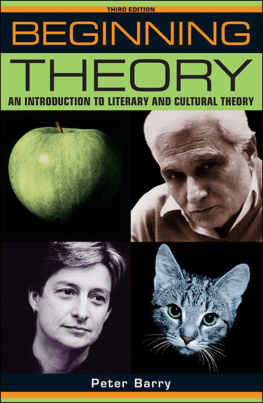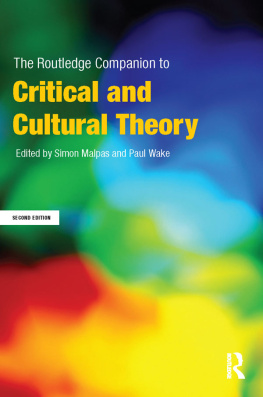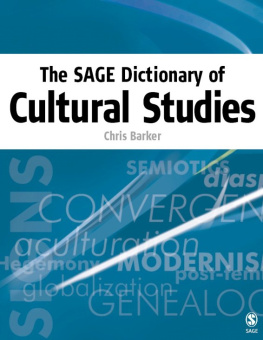Doing Cultural Theory
Doing Cultural Theory
David Walton
David Walton 2012
First published 2012
Panzani Freres
Lagardre
Hans Haacke/Artists Rights Society
Hans Haacke/Artists Rights Society
Bas Beentjes/Greenpeace
This book has been written as part of a research project sponsored by the Fundacin Sneca (number 15397/PHCS/10).
Apart from any fair dealing for the purposes of research or private study, or criticism or review, as permitted under the Copyright, Designs and Patents Act, 1988, this publication may be reproduced, stored or transmitted in any form, or by any means, only with the prior permission in writing of the publishers, or in the case of reprographic reproduction, in accordance with the terms of licences issued by the Copyright Licensing Agency. Enquiries concerning reproduction outside those terms should be sent to the publishers.
SAGE Publications Ltd
1 Olivers Yard
55 City Road
London EC1Y 1SP
SAGE Publications Inc.
2455 Teller Road
Thousand Oaks, California 91320
SAGE Publications India Pvt Ltd
B 1/I 1 Mohan Cooperative Industrial Area
Mathura Road
New Delhi 110 044
SAGE Publications Asia-Pacific Pte Ltd
3 Chruch Street
#1004 Samsung Hub
Singapore 049483
Library of Congress Control Number: 2011935160
British Library Cataloguing in Publication data
A catalogue record for this book is available from the British Library
ISBN 978-0-85702-484-8
ISBN 978-0-85702-485-5 (pbk)
Typeset by C&M (P) Ltd, Chennai, India
Printed and bound by CPI Group (UK) Ltd, Croydon, CR0 4YY
Printed on paper from sustainable resources
Contents
List of Figures and Table
Acknowledgements
While this book carries my name, books are always, in varying degrees, collaborative efforts and I would like to offer my thanks to a number of colleagues and friends.
Thanks go to Patricia Bickers from Art Monthly for contacting Hans Haacke on my behalf and to Hans Haacke himself for giving me permission to use his photos of his MetroMobilitan installation () and to John Harris who was very generous in terms of sending me valuable feedback on the photo he took of Lesley Boulton at the Battle of Orgreave.
I would also like to thank the anonymous readers at SAGE for their valuable comments. I did not always agree with the points they made but they undoubtedly helped me to refine my ideas and reconsider a number of features. Thanks must go to Elizabeth Ezra who generously offered to read the opening chapters at a very early stage. Her comments, advice and encouragement have been very important in terms of giving me the energy to complete the book. Nuria Urzaiz not only gave me encouragement but kindly offered to give very detailed feedback on the first drafts of a number of chapters from the point of view of the kind of reader I was aiming at. Many thanks, too, to Vernica Morales who offered me her support by reading some of the later drafts of the final chapters. My biggest debt is to Mila Steele, my editor at SAGE, for her very constructive criticism, encouragement, support and advice. Mila helped me to perfect the overall structure and content, and has been there at every stage of the books development. I would also like to thank Sarah-Jayne Boyd (Milas assistant) for her advice and help and efficiency, especially in the final stages of completing the book.
Finally, I would like to recognize the support and encouragement of my family and my many friends and colleagues who have helped in a million small (and not so small) ways sometimes without knowing it. Special thanks go to Cathy Staveley, Liz Murphy, Mara Reyes, Juan Antonio Surez, Mara Gonzlez, Asensio Lpez, Raquel Gonzlez and Andy Sotiriou and, last but not least, Dan Walter. Without them the writing of this book would have been a much more arduous task. As it is, the process has been thoroughly enjoyable. Finally, thanks must go to my students who have often helped me to refine my ideas by showing what works and, often, what does not.
Introduction
How to Use this Book
Who is this book written for?
You may have come across terms like semiological systems, signification, the problematic, symptomatic reading, deconstruction, logocentrism, the big Other, anti-essentialism and the postmodern subject, but not have been sure about what they mean or how they might be used in practice. If this is the case this book should be able to help you. This book, then, is aimed at readers who already have some knowledge of cultural studies but who want to get a firmer grasp of the way cultural theory relates to practice. However, those who have little or no knowledge of cultural analysis, but who feel they have the academic experience and confidence to tackle cultural theory and practice at a higher level, will also find it useful. With this in mind, the first chapter is designed to take account of different possible readerships. On the one hand, it helps to show how the theories and ideas explained and illustrated in this book fit into a larger historical picture. On the other hand, it can serve as valuable revision for those readers who are already familiar with the area or a basic introduction for those with no previous knowledge.
General aims and approach of this book
This book can be seen as akin to the viaduct a conduit which carries something or someone from one place to another (a kind of theory-duct). One aim of this book is to describe the different theories, however complex, in an accessible style. However, I have not avoided the use of complex terms and have tried to describe them as clearly as possible in relation to how they relate to various forms of cultural analysis. This raises the problem of up to what point a technical vocabulary is necessary. As Lawrence Grossberg has said, while scientists who describe the physical world are expected to use languages not available to most people, those who explore social reality are often expected to write so that anyone can understand. Yet human reality is not necessarily any less complex than the world of subatomic particles. Thus, sometimes we need complex and nonobvious explanations of whats going on (1992: 3031). We can try to explain quantum mechanics or computer science in ordinary terms but to get to the finer subtleties it is more often than not necessary to learn specific concepts and ways of thinking.
The specialized vocabulary introduced in this book, then, is not an elitist attempt to put ourselves above others but part of an effort to immerse ourselves in the language of a particular discipline. The understanding of theory is constantly explained with an eye to how it may function in practice. In this way its application is a little like a voyage of discovery, where the world is experienced in new and perhaps surprising ways through the assimilation, adaptation and refinement of concepts previously unknown (or vague) to us. The general approach adopted in this book assumes that interpretation and analysis are always a product of, and dependent on, very particular shaping strategies, something which makes the critic a maker or fashioner. One of the other main aims of the book, then, is to help the reader to become articulate in these theoretical languages.


